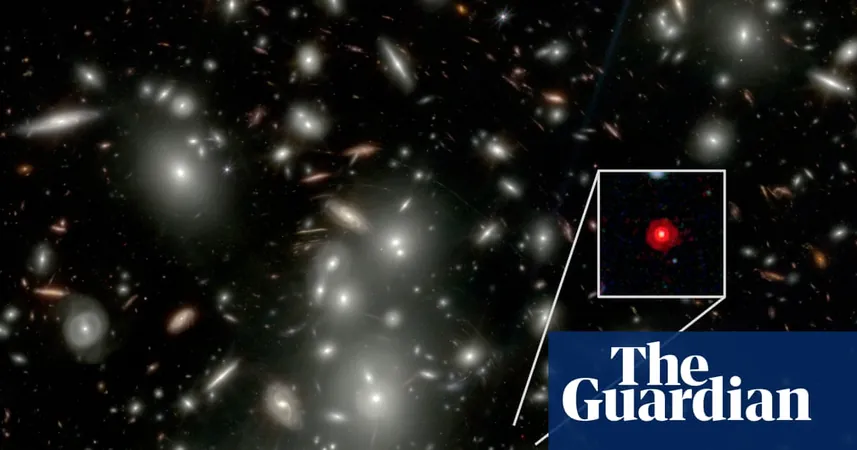
Astronomers Uncover Ancient Black Hole: A Potential Game Changer for Cosmology!
2025-09-02
Author: Wei
In a revolutionary discovery, astronomers using the James Webb Space Telescope (JWST) have detected an ancient and extraordinarily rare black hole that may have formed just moments after the Big Bang! This astonishing find has the potential to completely reshape our understanding of the universe.
Described as a "nearly naked" black hole, this object could be a primordial black hole—an elusive kind theorized by the legendary physicist Stephen Hawking but never directly observed until now. If confirmed, this discovery challenges the long-held belief that black holes emerged only after the first stars collapsed.
Shattering Existing Theories!
Historically, scientists believed that the universe's first structures were stars and galaxies, which then collapsed into black holes as they exhausted their fuel. However, new observations have revealed a gigantic black hole with only a thin halo of material surrounding it, suggesting it may have existed independently of any galaxy.
"This black hole is nearly naked," remarked Professor Roberto Maiolino from the University of Cambridge. "This challenges what we think we know about black hole formation, indicating it appeared without a galaxy to support it."
A Glimpse into the Dawn of Time!
The focus of this groundbreaking observation is a tiny but incredibly bright dot identified as QSO1, which dates back over 13 billion years to a time when the universe was a mere 700 million years old. This remarkable distance pinpointed it as an ancient supermassive black hole.
Traditionally, black holes are believed to grow gradually, consuming stars and cosmic material. However, scientists are bewildered by how QSO1 managed to grow to such an enormous mass so quickly.
Massive Discoveries!
Using the JWST, astronomers examined the swirling gas and dust around QSO1, measuring the central black hole's mass at an astonishing 50 million solar masses! Remarkably, the surrounding material amounts to less than half that mass.
"In our local universe, central black holes typically have masses that are about a thousand times less than that of their host galaxies," explained Maiolino.
A Chemical Mystery!
Adding to the intrigue, the material encircling the black hole was found to consist almost entirely of hydrogen and helium—elements that originated from the Big Bang. The lack of heavier elements suggests no significant star formation has taken place nearby, strengthening the case for a primordial black hole.
"This is a paradigm shift in our understanding of cosmic history," Maiolino noted, indicating that they are observing a massive black hole forming without an accompanying galaxy.
Future Implications!
Another theory posits that a massive cloud of gas could collapse directly into a black hole, bypassing star formation altogether. However, specific environmental conditions necessary for this phenomenon are absent in current observations, leading scientists to prefer the primordial black hole explanation.
Professor Andrew Pontzen from the University of Durham, who wasn't involved in the study, emphasized the profound implications of confirming primordial black holes. He mentioned, "While this research strengthens the primordial origin hypothesis, it remains an indirect argument. It may take years for consensus to form on this issue, but the next generation of gravitational wave detectors will likely clarify the situation within a decade."




 Brasil (PT)
Brasil (PT)
 Canada (EN)
Canada (EN)
 Chile (ES)
Chile (ES)
 Česko (CS)
Česko (CS)
 대한민국 (KO)
대한민국 (KO)
 España (ES)
España (ES)
 France (FR)
France (FR)
 Hong Kong (EN)
Hong Kong (EN)
 Italia (IT)
Italia (IT)
 日本 (JA)
日本 (JA)
 Magyarország (HU)
Magyarország (HU)
 Norge (NO)
Norge (NO)
 Polska (PL)
Polska (PL)
 Schweiz (DE)
Schweiz (DE)
 Singapore (EN)
Singapore (EN)
 Sverige (SV)
Sverige (SV)
 Suomi (FI)
Suomi (FI)
 Türkiye (TR)
Türkiye (TR)
 الإمارات العربية المتحدة (AR)
الإمارات العربية المتحدة (AR)